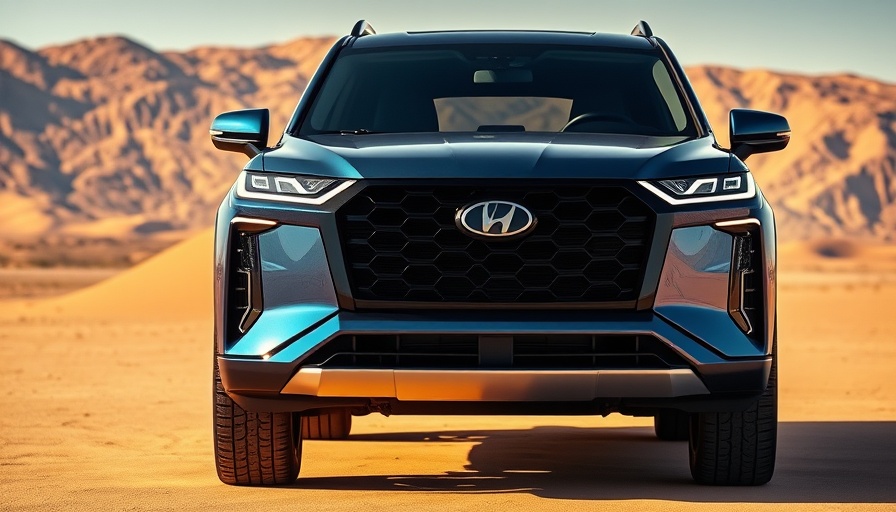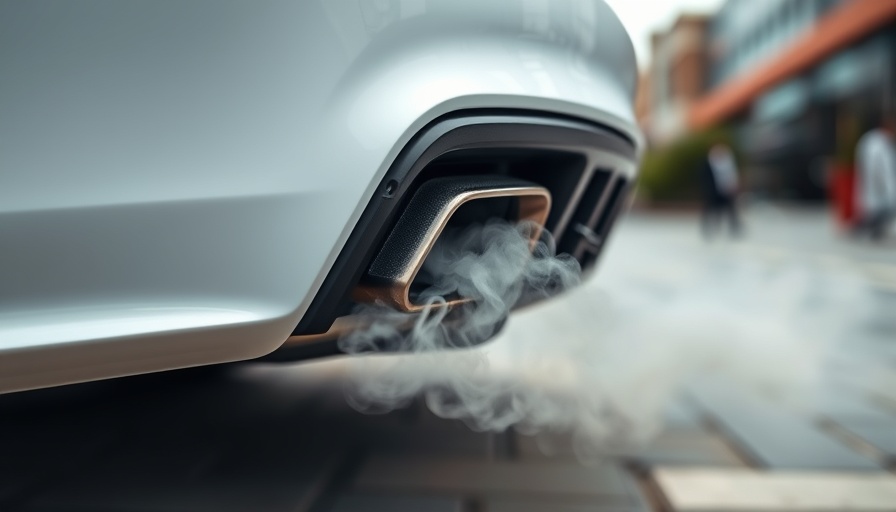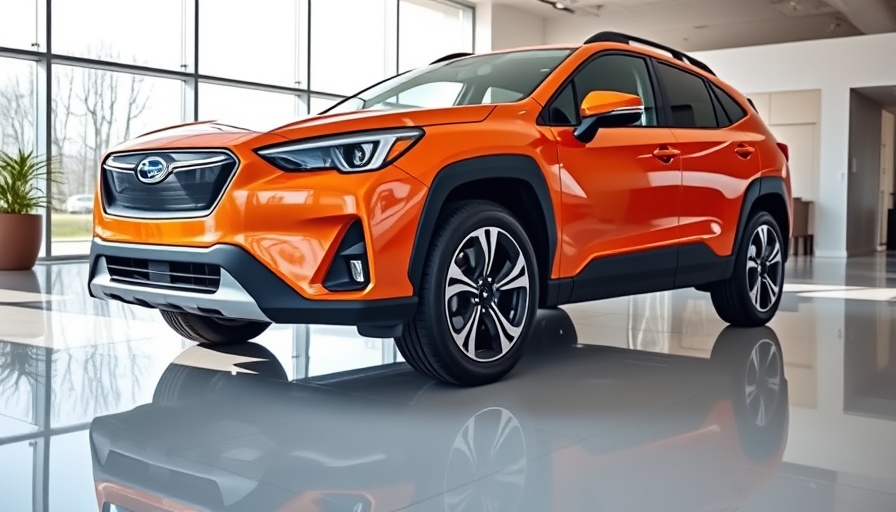
Hyundai's 2026 Non-EV Lineup: A Testament to Internal Combustion Power
As the automotive industry rushes toward electrification, Hyundai’s decision to enhance its 2026 internal combustion engine (ICE) lineup comes as a refreshing commitment to tradition. While electric vehicles (EVs) garner much of the spotlight, there remains a substantial segment of the market that seeks the reliability and familiarity of gasoline-powered vehicles. Hyundai aims to bridge this gap with its redesigned lineup that caters to these buyers, ensuring that they have compelling options while infrastructure for EVs develops.
Introducing the All-New 2026 Hyundai Palisade
The centerpiece of Hyundai's 2026 ICE offerings is undoubtedly the all-new Palisade. This three-row SUV not only adopts a bold redesign but also embraces modern amenities and off-road capabilities. With a powerful 3.5L GDI V6 engine delivering 287 horsepower and 260 lb-ft of torque, the Palisade is built for families seeking space, comfort, and performance. The vehicle's luxurious features, like heated seats and panoramic displays, particularly stand out, setting a new standard for family SUVs. Hyundai has made it clear that the Palisade will cater well to families who prioritize both functionality and style.
Carrying the Legacy Forward: The 2026 Elantra and More
Alongside the Palisade, Hyundai continues to offer solid choices like the 2026 Elantra and Tucson, among others. The Elantra maintains its reputation as a smart, no-nonsense sedan with impressive fuel efficiency and a sporty N Line version for those looking for a driving thrill. Although it’s a carryover from previous years, the Elantra remains an excellent value, especially for compact car enthusiasts.
The 2026 Tucson, too, aligns with this approach. As a carryover model with a focus on fuel efficiency and practicality, it solidifies the brand's dedication to providing reliable options for those who lean towards gasoline vehicles rather than dipping into the EV market. With each model retaining solid performance specifications and advanced safety features, Hyundai stands firm amidst the rising tide of electrification.
Hyundai’s Strategy in a Shifting Automotive Landscape
The choice to keep developing and refreshing ICE vehicles comes at a critical moment in automotive history. With a significant portion of consumers still hesitant about the shift to electric, Hyundai's expansion of its non-EV lineup speaks volumes. Many buyers experience range anxiety and concerns about charging infrastructure, which can deter them from fully embracing EVs. By offering reliable alternatives, Hyundai acknowledges the gradual pace of this shift and provides choices for those who may not be ready or able to transition completely.
In fact, automotive trends show a competitive landscape in which many families are still weighing their options between sedans and SUVs. This indicates that traditional vehicle categories will continue to thrive alongside EVs. For potential buyers, this presents an excellent opportunity to compare models based on their needs, recognizing the unique strengths of Hyundai’s ICE offerings alongside advanced vehicle technology.
The Importance of Choice: Understanding Consumer Needs
The evolution within Hyundai’s lineup also reflects a broader understanding of consumer needs and preferences in the current auto market. Many buyers are looking for cars that provide reliability, lower maintenance costs, and strong performance features—all hallmarks of internal combustion vehicles.
Furthermore, according to recent trends, buyers increasingly value real-world performance metrics over the touted benefits of electric alternatives. Topics such as fuel efficiency comparisons, real-world MPG reviews, and the value of car technology features are vital for prospective purchasers who wish to maximize their investment over time. This attention to value, reliability, and performance over flashy tech is an integral part of what Hyundai is banking on with its 2026 ICE models.
Conclusion: Embracing Tradition While Moving Forward
Hyundai's 2026 lineup, prominently showcasing its commitment to internal combustion options, underscores a significant lesson: while the market pushes toward electrification, the journey to electric vehicles will not happen overnight. By continuing to innovate and upgrade their ICE models, Hyundai greatly supports a diverse consumer base looking for dependable and enjoyable cars.
Ultimately, for those who value the reassurance that comes from tried-and-true vehicles, Hyundai's new lineup promises an appealing combination of strength and allure. Whether it's improving safety ratings or ensuring better fuel efficiency, the brand is making strides that appeal to a wide range of buyers who remain cautious about going fully electric.
 Add Row
Add Row  Add
Add 




Write A Comment